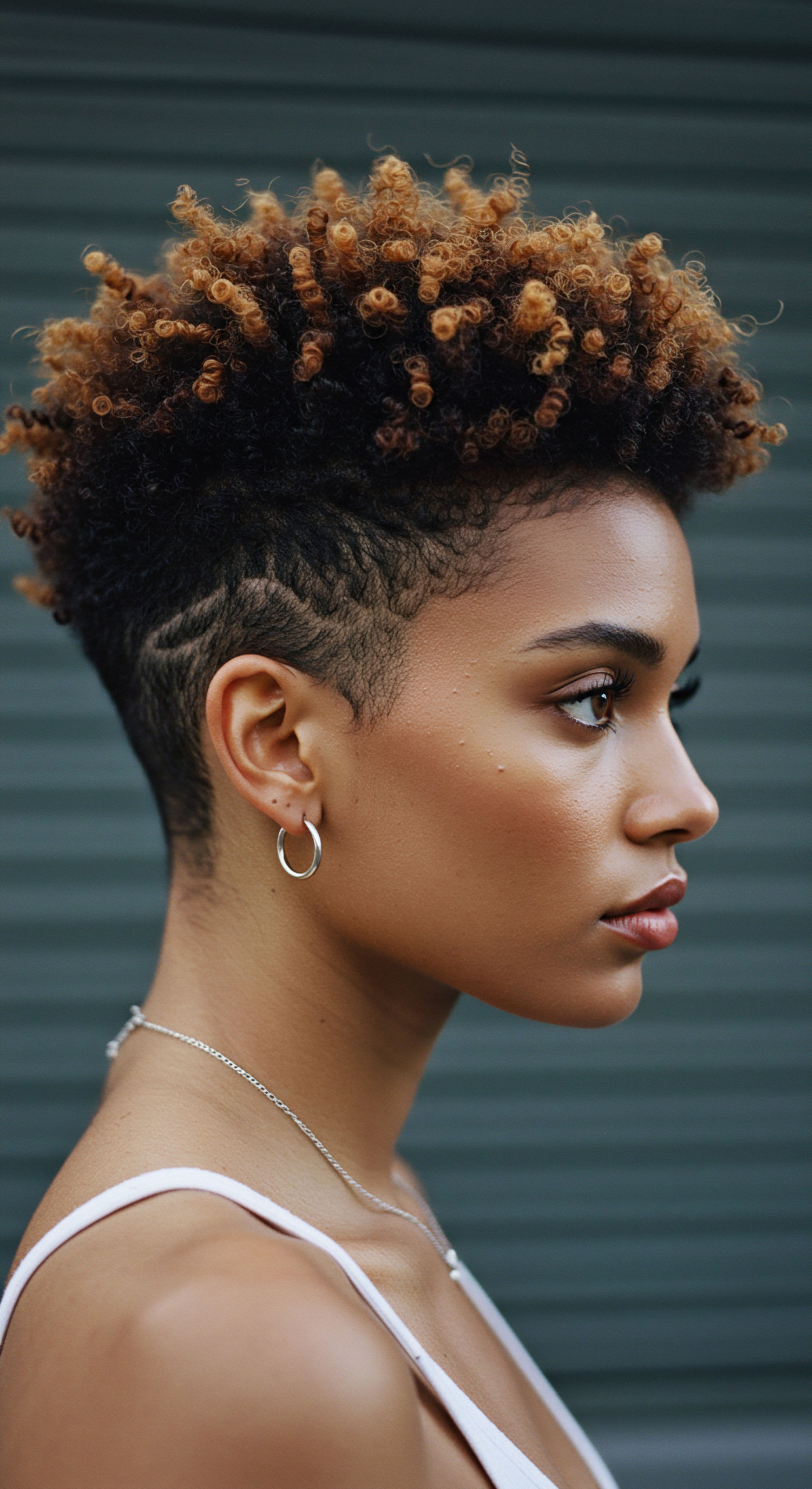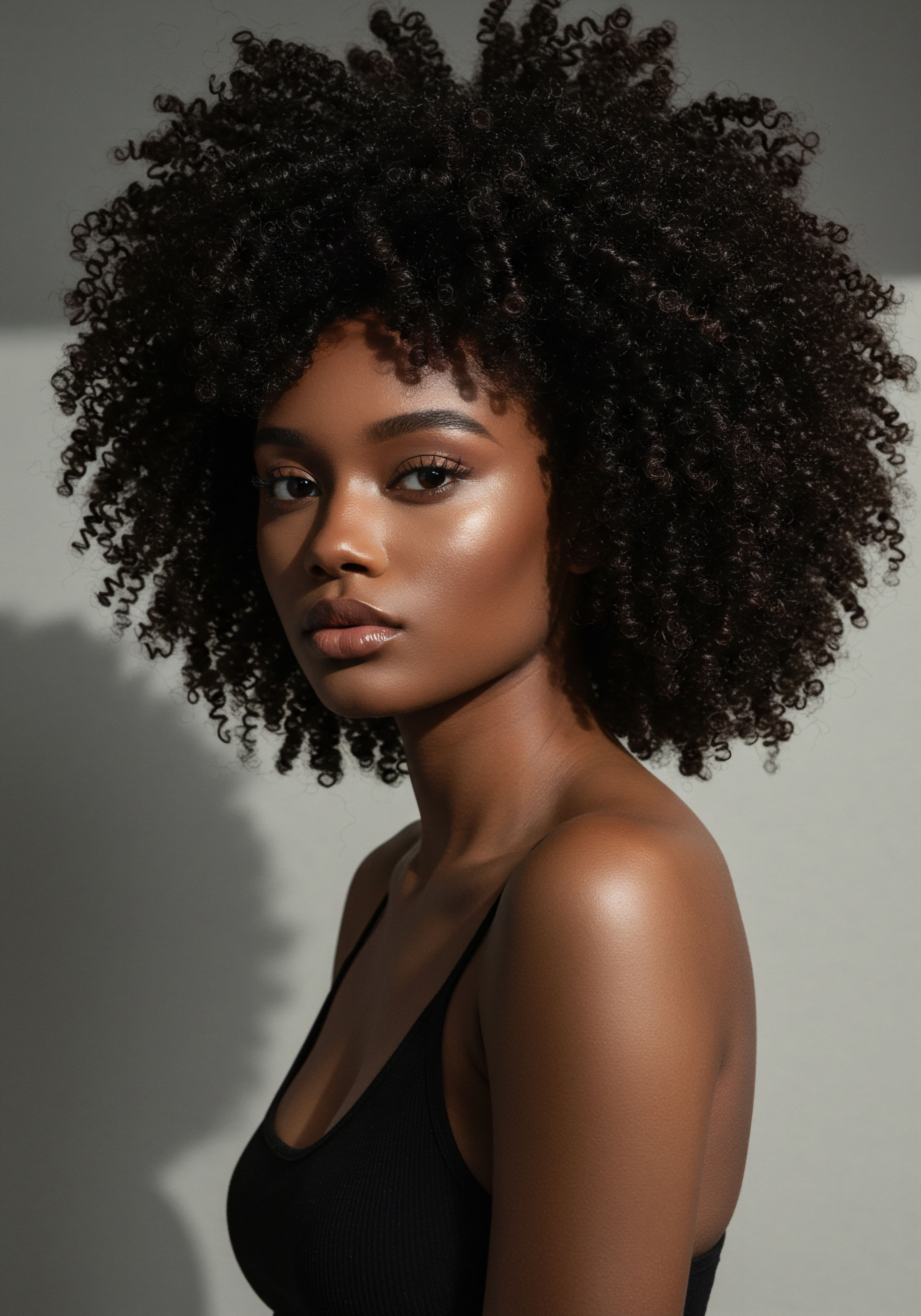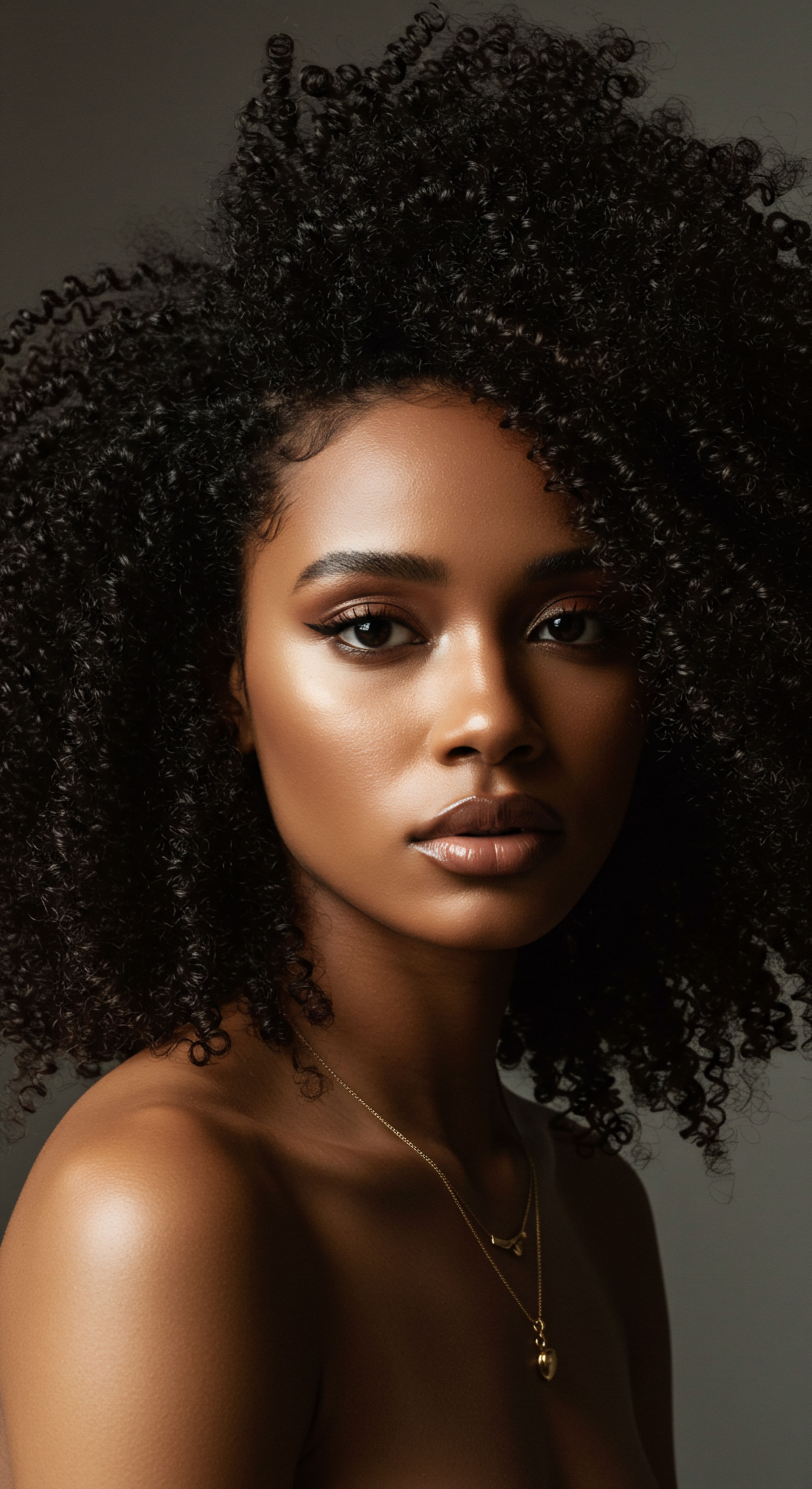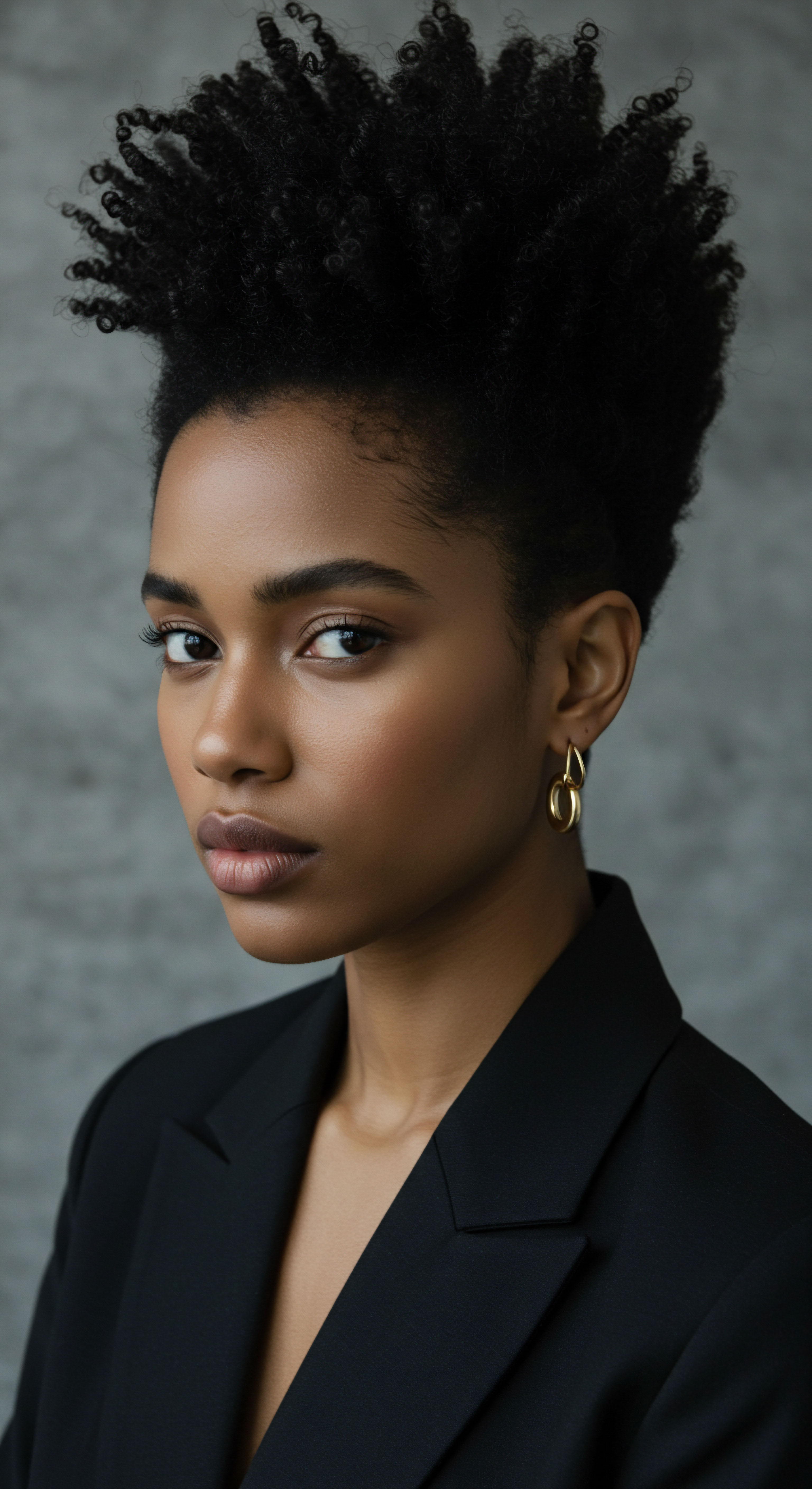
Roots
The sun-drenched expanse of desert lands, with their relentless winds and parched earth, appears an unlikely cradle for vibrant hair. Yet, within these formidable environments, certain plants have not merely survived but flourished, offering profound lessons in resilience and self-preservation. For generations, communities dwelling in these stark landscapes observed, experimented, and ultimately came to understand the quiet strength held within desert flora.
Their collective wisdom, passed down through the ages, speaks of a profound connection to the natural world, a testament to discerning the subtle language of botanical protection. It is a story not simply of survival, but of sustained beauty against overwhelming odds, mirroring the innate desire to safeguard our own delicate strands from the world’s harshness.
Consider the ancient peoples who navigated these challenging terrains. Their very existence hinged on an intimate comprehension of their surroundings. Every leaf, every root, held a potential purpose, a secret waiting to be unveiled. For hair, exposed daily to intense ultraviolet radiation and drying winds, the need for shielding was not a cosmetic indulgence, but a fundamental aspect of care.
The plants they turned to were those that had themselves mastered the art of holding onto life-giving moisture, deflecting solar assault, and resisting environmental strain. These botanical allies became the earliest guardians of healthy hair, long before laboratories and synthetic compounds entered the conversation.

Ancient Guardians of the Hair
Among the most celebrated desert plants recognized for their hair-supporting qualities, the Yucca stands tall. Often called “soap root,” this resilient plant, native to regions of Mexico and the southwestern United States, held a central place in the cleansing rituals of Native American communities. When its leaves and roots undergo preparation, a liquid emerges, rich in saponins. These natural compounds possess a unique ability to produce a gentle lather, acting as natural surfactants.
Unlike the often harsh detergents found in contemporary shampoos, yucca cleanses without stripping the hair’s inherent oils, leaving it refreshed yet still protected. This property was not just about cleanliness; it contributed to maintaining the hair’s structural integrity in a climate that relentlessly sought to dry it out.
Beyond its cleansing capabilities, yucca brought more to the scalp and strands. Research indicates its potential for reducing inflammation, offering a soothing balm for irritations such as dandruff or psoriasis. The very act of cleansing with yucca was, for these communities, an act of restorative care, laying a foundation for healthy growth.
Desert plants, through centuries of human observation, revealed their profound capacity to safeguard hair against environmental rigors.

Aloe Vera’s Timeless Soothing Touch
Another desert marvel, Aloe Vera, has a legacy reaching back millennia, with its use documented in ancient Egyptian beauty rituals. Known as the “plant of immortality,” aloe vera’s succulent leaves hold a clear, mucilaginous gel, a substance prized for its hydrating and calming properties.
For hair exposed to the relentless desert sun, aloe vera gel provided immediate relief and a surge of moisture. Its composition, rich in vitamins (A, C, E, B12), minerals, enzymes, and amino acids, speaks to a complex biological toolkit designed for repair and replenishment. This natural bounty helps to soothe an irritated scalp, combat fungal issues that can lead to dandruff, and hydrate dry strands, restoring a supple feel. The application of aloe was not merely a cosmetic act; it was a therapeutic gesture, acknowledging the vulnerability of hair and scalp to the desert’s demands.

How Aloe Vera Addresses Scalp Concerns
The desert climate, while beautiful, can contribute to various scalp conditions, including dryness and irritation. Aloe vera’s multi-component makeup offers a gentle yet effective counterpoint. Its anti-inflammatory action helps quiet discomfort, while antifungal and antibacterial properties address microbial imbalances that can lead to flaking and itchiness. Furthermore, the hydrating polysaccharides within the gel act as a moisture magnet, drawing and holding water to the scalp, a critical function in arid zones.
- Yucca Saponins cleanse without stripping, preserving natural oils vital for desert hair.
- Aloe Vera Gel calms irritation and hydrates, counteracting the desert’s drying effects.
- Traditional Wisdom guided the discovery of these plants’ protective qualities.
| Plant Yucca |
| Key Compounds Saponins |
| Hair/Scalp Benefit Gentle cleansing, scalp soothing, UV protection |
| Plant Aloe Vera |
| Key Compounds Polysaccharides, Vitamins, Enzymes |
| Hair/Scalp Benefit Hydration, anti-inflammatory, dandruff control |
| Plant These plants offered foundational protection against harsh desert elements. |

Ritual
Stepping from the foundational knowledge of desert plants, we consider the daily practices and purposeful preparations that transformed these botanical gifts into protective rituals. The wisdom of desert communities extended beyond mere identification; it encompassed the art of extraction, combination, and application, shaping habits that shielded hair from the sun’s glare and the wind’s drying touch. These were not casual acts, but deliberate steps, often infused with reverence for the plants themselves and the sustenance they provided. It is in these mindful applications that the desert’s quiet strength truly became a part of one’s personal care.
The methods were simple yet effective, born of necessity and refined through generations. Crushing yucca roots to release their saponins, or carefully slicing open an aloe leaf to collect its cool gel, were not just chores but engagements with the plant’s very essence. These preparations formed the bedrock of hair protection, laying the groundwork for more intricate care routines that developed over time.

Jojoba and Argan Oils Daily Protection
Among the most celebrated desert elixirs to gain global recognition are Jojoba Oil and Argan Oil. Though often referred to as “oils,” jojoba is technically a liquid wax ester, remarkably similar in composition to the sebum naturally produced by the human scalp. This unique molecular structure allows it to integrate seamlessly with hair and skin, offering unparalleled moisturizing and protective benefits without leaving a heavy or greasy feel.
For those living in arid zones, where the scalp and hair constantly contend with moisture loss, jojoba oil became a natural ally. Its ability to mimic the scalp’s own protective secretions meant it could replenish lost lipids, smooth the hair cuticle, and create a subtle shield against environmental stressors like UV radiation and dry air. Regular application was a ritual of restoration, helping to maintain hair’s suppleness and reduce breakage in conditions that would otherwise render strands brittle.
The purposeful preparation and application of desert plants formed daily rituals of hair protection, turning botanical gifts into personal care.
Similarly, Argan Oil, sourced from the kernels of the argan tree native to southwestern Morocco, holds a revered status. Berber women, for centuries, have harnessed this “liquid gold” for its remarkable ability to nourish and protect hair. Rich in fatty acids, including linoleic and oleic acids, and vitamin E, argan oil penetrates the hair shaft, fighting oxidative damage and helping to prevent protein loss.
Its lightweight nature meant it could be applied to damp or dry hair, smoothing frizz and imparting a healthy sheen. For those with textured hair, particularly vulnerable to dryness and breakage in harsh climates, argan oil provided a crucial layer of defense, improving elasticity and manageability. The daily application of argan oil was a practice of sustained care, a silent acknowledgment of the desert’s influence and a gentle defiance of its drying power.

Preparing and Applying Botanical Shields
The ritual of preparing these botanical shields often began with simple steps. For yucca, the root would be cleaned, then carefully crushed or pounded to release its saponins. This foamy liquid could then be used directly as a cleansing wash for the hair and scalp. Aloe vera gel was simply scooped from the inner leaf, a clear, cool balm ready for application.
Oils like jojoba and argan, being liquid at room temperature, required less preparation. They were typically warmed slightly between the palms and then massaged into the hair and scalp. This gentle warming enhanced absorption, allowing the beneficial compounds to work their magic more effectively. These simple yet potent preparations were woven into daily life, becoming intuitive acts of self-preservation and beautification.
- Jojoba Oil, a liquid wax ester, mimics natural sebum, providing a lightweight protective barrier.
- Argan Oil, rich in fatty acids and vitamin E, deeply nourishes and guards against environmental damage.
- Traditional Methods involved direct extraction and mindful application of plant compounds.
| Plant Product Yucca Root Extract |
| Preparation Crushed root to release saponins |
| Application Technique Scalp and hair wash, gently massaged to cleanse |
| Plant Product Aloe Vera Gel |
| Preparation Scooped from inner leaf |
| Application Technique Applied directly to scalp and strands as a hydrating mask or leave-in |
| Plant Product Jojoba Oil |
| Preparation Warm slightly between palms |
| Application Technique Massaged into scalp and distributed through hair ends |
| Plant Product Argan Oil |
| Preparation Warm slightly between palms |
| Application Technique Applied to damp or dry hair for shine and protection |
| Plant Product Simple, yet effective, these practices provided sustained hair health. |

Relay
Our understanding of desert plants and their gifts for hair extends beyond observation and traditional ritual, reaching into the precise realms of scientific inquiry and cross-cultural exchange. This exploration unveils the intricate molecular architecture that renders these botanicals so remarkably protective, allowing us to appreciate their profound efficacy on a deeper level. The conversation broadens, encompassing not only what these plants offer, but also how modern research refines our appreciation, sometimes even challenging our long-held perceptions, all while grounding us in the enduring wisdom of ancestral practices.
The desert’s formidable conditions forced these plants to develop sophisticated defense mechanisms against water loss and sun exposure. These very adaptations are what make them so valuable for hair. Scientists now identify specific compounds, such as unique fatty acid profiles, powerful antioxidants, and natural humectants, that work in concert to shield and restore. This scientific lens helps us appreciate the genius of nature and the intuitive brilliance of those who first discovered these botanical treasures.

The Science of Desert Plant Protection
The protective capabilities of desert plants for hair are rooted in their unique biochemical compositions. Take Prickly Pear Seed Oil, a relatively newer entrant to widespread recognition compared to argan, yet equally compelling. Extracted from the seeds of the Opuntia ficus-indica cactus, this oil is a powerhouse of Vitamin E, boasting a concentration up to three times higher than that found in argan oil. This vitamin, a potent antioxidant, plays a crucial role in protecting hair from oxidative stress caused by environmental aggressors like UV radiation and pollution.
Beyond Vitamin E, prickly pear seed oil contains Vitamin K, phytosterols, and zinc, contributing to its regenerative, repairing, and nourishing qualities. It is particularly noted for its ability to protect hair from heat damage, reduce frizz, and seal split ends, offering a comprehensive shield for vulnerable strands.
Similarly, Agave Nectar, derived from the agave plant, acts as a remarkable humectant. Its polysaccharides, saponin, inulin, and fructose molecules possess numerous hydroxyl groups, which are hydrophilic, meaning they readily attract and hold water. This property is paramount for hair in dry climates, as it draws moisture from the atmosphere to the hair shaft, providing sustained hydration and a lustrous sheen. Beyond moisture, agave nectar offers antibacterial and anti-inflammatory properties, contributing to a healthier scalp environment conducive to optimal hair growth.

Comparative Efficacy and Modern Discoveries
While traditional desert plants have long provided essential hair protection, scientific investigation continues to uncover deeper insights and even introduce new perspectives. Consider a randomized, double-blind, placebo-controlled eight-month trial investigating the effect of Miracle Fruit Seed Oil (MFSO®) on hair breakage in women with damaged hair. This study, published in the Journal of Clinical and Aesthetic Dermatology, revealed that MFSO® significantly reduced hair breakage and increased the amount of unbroken hairs when compared to both a placebo and a leading commercial argan oil brand.
This finding does not diminish the profound benefits of argan oil, a cornerstone of desert hair care, but rather illustrates the ongoing scientific exploration into the precise mechanisms and comparative strengths of various botanical oils. It highlights that while argan oil excels in many areas, the specific physicochemical properties of other oils, like MFSO®, may offer superior outcomes for particular concerns such as hair breakage. This comparative research encourages a more nuanced understanding of how different oils interact with hair fibers, allowing for tailored approaches to hair health. The very high concentration of fatty acids in MFSO® enables it to coat and penetrate the hair effectively, offering a superior ability to prevent damage and breakage.
Scientific inquiry reveals the complex biochemistry of desert plants, confirming their protective prowess and inspiring new explorations.

Desert Date Oil A Comprehensive Protector
Another desert treasure, Desert Date Oil ( Balanites aegyptiaca ), extracted from the kernels of a resilient tree found in African woodlands, is gaining recognition for its rich profile. This oil is abundant in phytosterols, vitamins A and E, and unsaturated fatty acids, including omega-6 and omega-9. These components collectively contribute to its moisturizing, nourishing, and strengthening properties.
Significantly, desert date oil acts as a protective barrier, shielding hair from environmental stressors. Research suggests it possesses photoprotective characteristics, offering a degree of defense against harmful UV radiation, a critical benefit in sun-drenched environments. Its emulsifying properties also allow it to form a protective layer on the hair, preventing moisture loss and fortifying strands against external damage.
The interplay of antioxidants in desert date oil, such as those that scavenge free radicals produced by UV exposure, further reduces the risk of sun-induced damage and photoaging of the hair. This multi-layered protection makes it a comprehensive agent for maintaining hair vitality in challenging climates.

Ethnobotanical Studies and Modern Validation
The value of ethnobotanical studies, which document the traditional knowledge of plant uses by indigenous communities, cannot be overstated. These studies often provide the initial leads for modern scientific research. For example, ethnobotanical surveys in regions like Northern Morocco have identified dozens of plant species traditionally used for hair treatment and care, with high citation frequencies for plants like Lawsonia inermis (henna) and various others, many of which thrive in arid or semi-arid conditions.
Such traditional knowledge, passed down orally for generations, is now being validated by contemporary scientific methods. The chemical compounds responsible for these protective and restorative effects are isolated and analyzed, allowing for a deeper understanding of their mechanisms of action. This collaboration between ancient wisdom and modern science enriches our collective understanding of hair health and the remarkable capabilities of the plant kingdom.
- Prickly Pear Seed Oil offers superior Vitamin E content, guarding against oxidative stress and heat damage.
- Agave Nectar acts as a potent humectant, drawing moisture to the hair even in dry air.
- Desert Date Oil provides a protective barrier with UV-filtering properties and antioxidants.
- Modern Research, including studies on Miracle Fruit Seed Oil, refines our understanding of botanical efficacy.
| Plant Oil Prickly Pear Seed Oil |
| Key Protective Compounds Vitamin E, Vitamin K, Phytosterols |
| Specific Hair Protection Antioxidant defense, heat protection, split end sealing |
| Plant Oil Desert Date Oil |
| Key Protective Compounds Phytosterols, Vitamins A & E, Omega-6 & Omega-9 |
| Specific Hair Protection Moisture barrier, UV protection, strengthening |
| Plant Oil Jojoba Oil |
| Key Protective Compounds Wax Esters (mimic sebum), Antioxidants |
| Specific Hair Protection Moisture regulation, environmental shield, frizz reduction |
| Plant Oil Argan Oil |
| Key Protective Compounds Fatty Acids (Linoleic, Oleic), Vitamin E |
| Specific Hair Protection Oxidative damage repair, protein loss prevention, elasticity |
| Plant Oil These oils provide a sophisticated defense against environmental aggressors. |

Reflection
The quiet perseverance of desert plants offers a profound metaphor for the enduring strength of textured hair. Just as these resilient botanicals have adapted to extreme conditions, developing ingenious ways to shield themselves, so too has textured hair, through its unique structure, often required distinct care to flourish in varied environments. The journey through the ancient wisdom and modern science of desert plants for hair protection reveals a deep respect for natural solutions, a recognition that the earth itself holds many secrets for our well-being.
It is a reminder that beauty is not merely a surface adornment, but a reflection of harmony with our surroundings, a testament to thoughtful care and a celebration of innate resilience. The lessons from the desert, whispered through generations and amplified by scientific discovery, continue to guide us toward a more attuned relationship with our strands.

References
- Mouchane, M. Taybi, H. Gouitaa, N. & Assem, N. (2024). Ethnobotanical Survey of Medicinal Plants used in the Treatment and Care of Hair in Karia ba Mohamed (Northern Morocco). Journal of Medicinal Plants Studies .
- Al-Musawi, Z. M. J. & Al-Rubaye, H. J. M. (2018). The medicinal plant components and applications (Aloe vera). Journal of Medicinal Plants Studies, 6(3), 162-167.
- Djerrou, Z. Maameri, A. Hamdi, S. & Djaalab, I. (2023). PHYTOCHEMICAL COMPONENTS, SUN PROTECTIVE PROPERTIES AND ANTIBACTERIAL ACTIVITY OF DESERT DATES (Balanites aegyptiaca) KERNEL OIL. ResearchGate .
- El-Shazly, A. M. & Abdel-Wahab, A. S. (2015). Traditional knowledge and use of medicinal plants in the Eastern Desert of Egypt ❉ a case study from Wadi El-Gemal National Park. Journal of Medicinal Plants Studies, 3(1), 13-22.
- Ho, T. H. et al. (2017). Material Characteristics of Hair Cuticles after Hair Oil Treatment. Sensors and Materials, 29(11), 1597-1603.
- Kala, C. P. (2006). Medicinal plants of the high altitude cold desert in India ❉ Diversity, distribution and traditional uses. International Journal of Biodiversity Science and Management, 2(1), 43-56.
- Mohammad, M. M. & Khan, M. (2024). Aloe-Vera in Hair Cosmetics ❉ A Comprehensive Overview. International Journal of Innovative Research in Technology, 10(8), 136-140.
- Moustafa, M. A. (2021). Traditional knowledge and use of medicinal plants in Algeria ❉ A Multiregional Ethnobotanical Study. Journal of Ethnopharmacology, 280, 114488.
- Obeid, H. & El-Hadidy, M. (2023). Impact of Hair Damage on the Penetration Profile of Coconut, Avocado, and Argan Oils into Caucasian Hair Fibers. Cosmetics, 10(2), 52.
- Parra, M. M. et al. (2014). Ethnobotany in Rayones, Nuevo León, México. Journal of Ethnobiology and Ethnomedicine, 10(1), 1-13.
- Rezig, M. et al. (2016). The Importance of Argan Oil in Medicine and Cosmetology. Molecules, 21(11), 1475.
- Shah, G. M. & Khan, Z. (2012). Cosmetic ethnobotany practiced by tribal women of Kashmir Himalayas. Journal of Ethnopharmacology, 144(3), 633-640.
- Villaseñor, C. (2020). Effect of Miracle Fruit (Synsepalum dulcificum) Seed Oil (MFSO®) on the Measurable Improvement of Hair Breakage in Women with Damaged Hair ❉ A Randomized, Double-blind, Placebo-controlled, Eight-month Trial. Journal of Clinical and Aesthetic Dermatology, 13(10), 30–35.